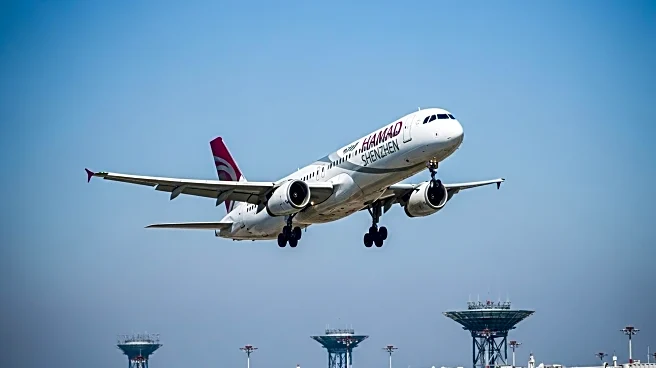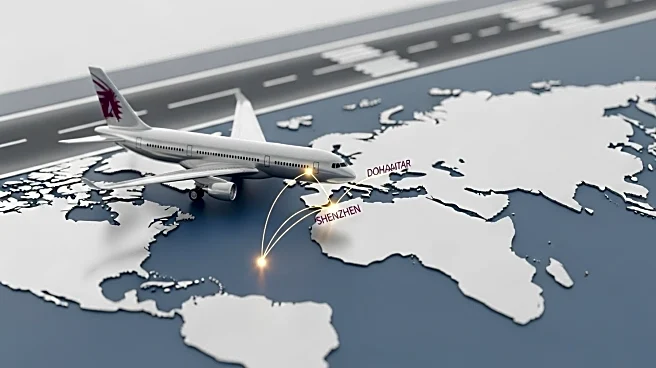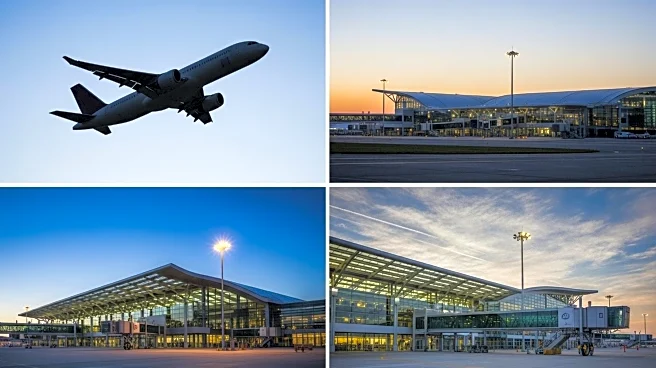What's Happening?
Hamad International Airport in Qatar and Shenzhen Bao'an International Airport in China have signed a Sister Airport agreement to strengthen ties and expand connectivity between the Middle East and China. This partnership aims to enhance passenger and cargo routes, leveraging the technological and trade ecosystems of both cities. The agreement was signed at Routes World 2025 in Hong Kong, with representatives from both airports and related stakeholders present. The collaboration focuses on coordinated route planning and technology adoption to improve travel experiences and foster economic growth.
Why It's Important?
The partnership between Hamad International Airport and Shenzhen Bao'an Airport is significant as it represents a strategic move to enhance connectivity between two major regions. This could lead to increased trade and tourism opportunities, benefiting both economies. For Qatar, the agreement may strengthen its position as a key hub in the Middle East, while Shenzhen Airport could expand its global network, enhancing its role as a gateway in the Greater Bay Area. The collaboration may also drive technological exchanges and cultural engagement, fostering deeper ties between Qatar and China.
What's Next?
Following the agreement, both airports are likely to focus on implementing coordinated route planning and technology initiatives to realize the partnership's goals. This may involve expanding flight options and improving infrastructure to support increased passenger and cargo flows. Stakeholders, including airlines and tourism boards, may work together to promote the new connectivity and attract travelers and businesses. The success of this partnership could lead to further collaborations between airports in other regions, enhancing global aviation networks.
Beyond the Headlines
The agreement highlights the growing importance of international airport partnerships in driving innovation and connectivity. It underscores the role of aviation in supporting economic development and cultural exchange, particularly between regions with strong technological and trade ecosystems. This partnership may set a precedent for similar collaborations, encouraging airports worldwide to explore strategic alliances that enhance their global reach and service offerings.











